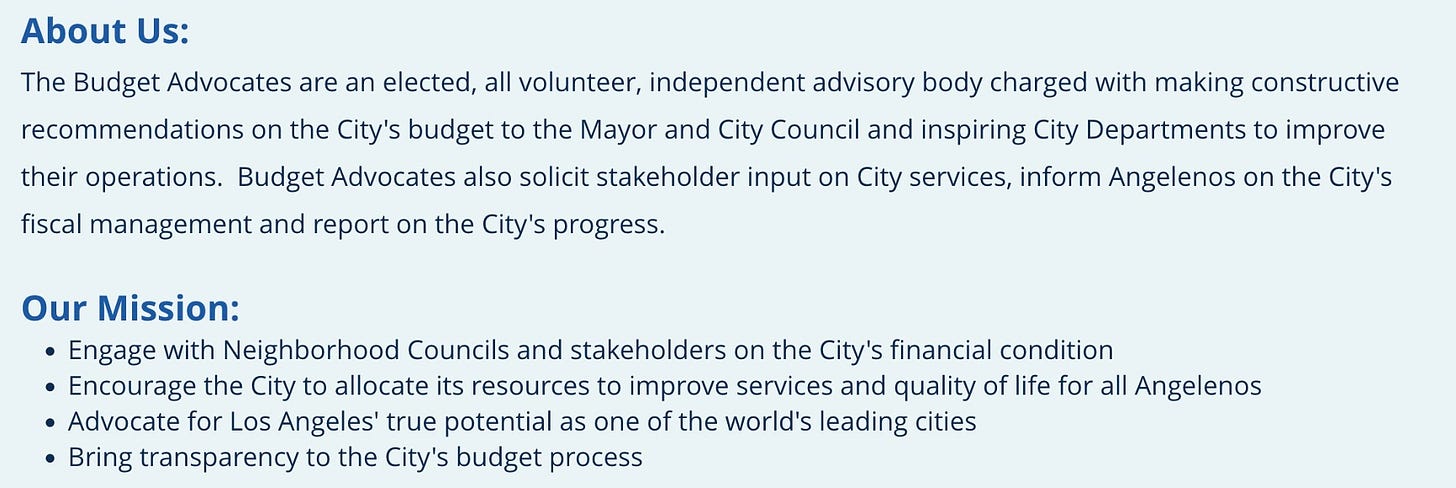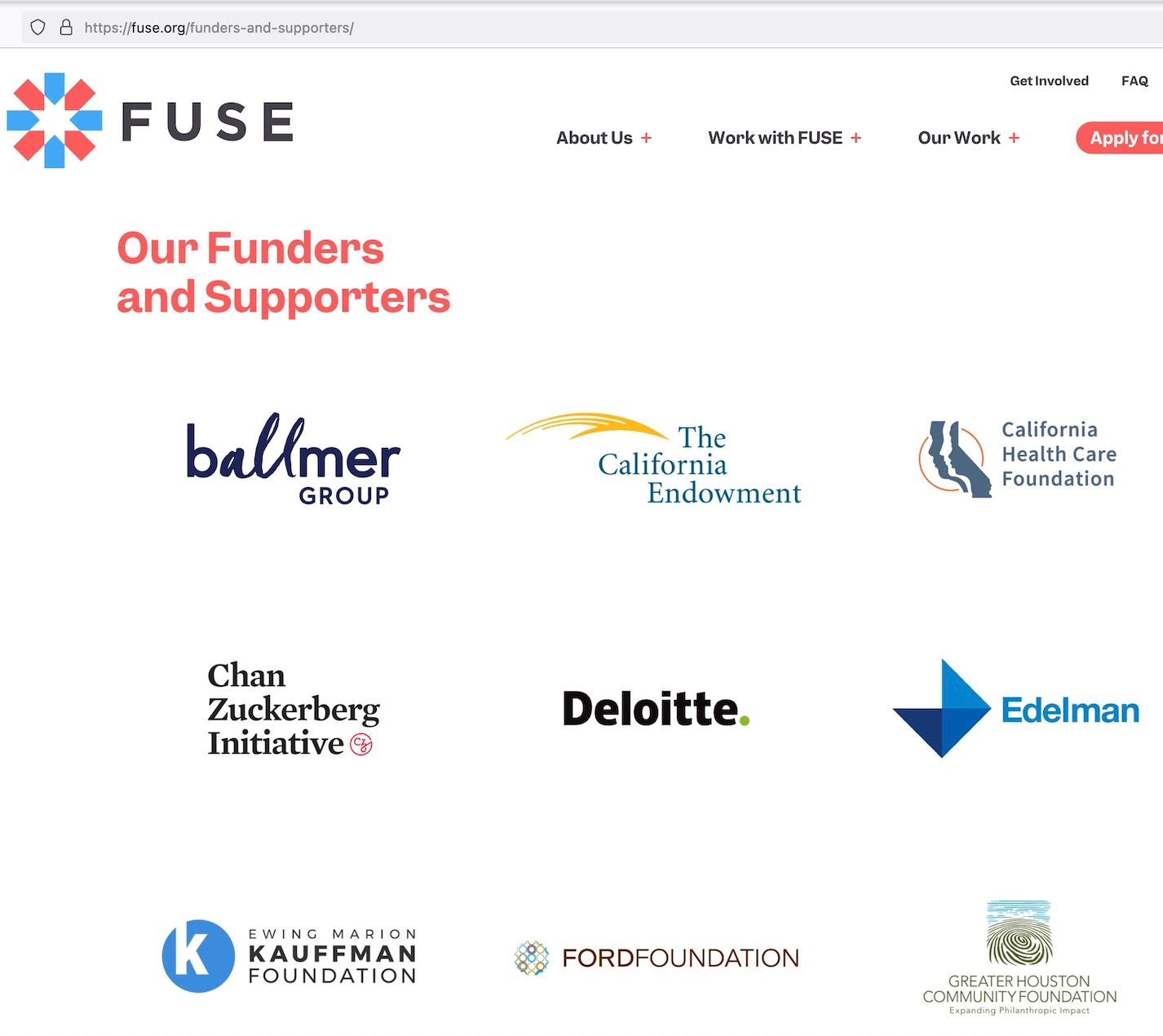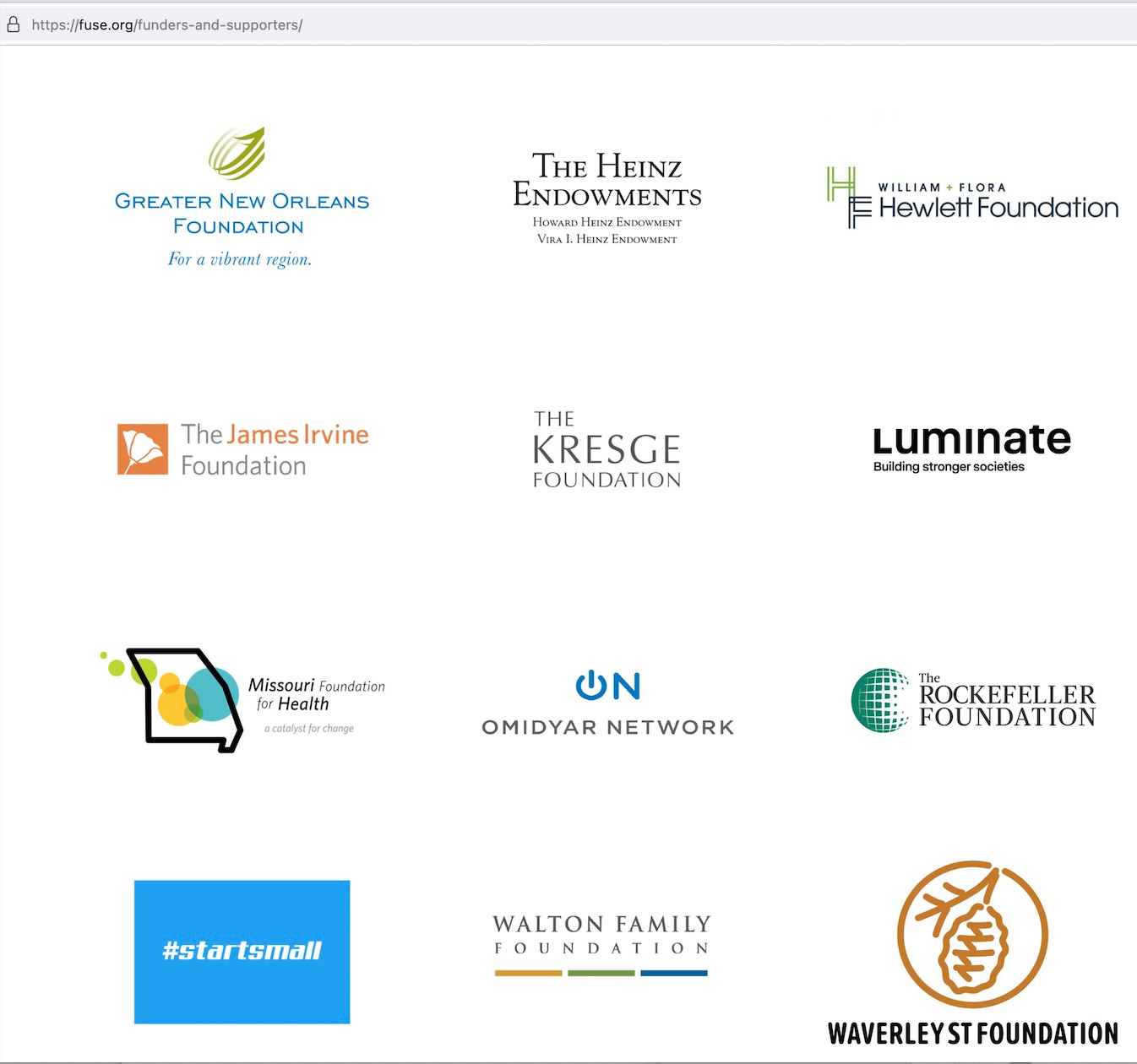LA Surveillance City Series: Chapter 1
In which LA's Neighborhood Council of Budget Advocates (NCBA) establishes the "Smart" City narrative.
Based on a trove of documents obtained through multiple California Public Records Act (CPRA) requests, the City of Los Angeles’s SmartLA 2028 initiative seemed to kick into high gear as the 2010’s gave way to the 2020’s with the publication of the Neighborhood Council of Budget Advocates (NCBA)’s 2019 and 2020 White Papers. Those documents established copper wire and power theft (CWPT) as one of the primary challenges LA’s city government faced as the current decade dawned, and recommended increased surveillance and public monitoring as the best solutions to that challenge. Therefore, this article will focus on the NCBA’s role in shaping LA’s “Smart” City transition. PDF files of both NCBA White Papers are posted for download below, and screenshots are included for reference.
The Neighborhood Council of Budget Advocates (NCBA) White Papers
According to their website, the NCBA is “an elected, all volunteer, independent advisory body charged with making constructive recommendations on the City's budget to the Mayor and City Council and inspiring City Departments to improve their operations.”[1] The NCBA issued its 2019 and 2020 White Papers, which contain the NBCA’s recommendations for various City departments, in that advisory capacity. The NBCA’s members are elected but unpaid. Thus, it would be interesting to know who funds the campaigns of this unpaid advisory body’s members.
NCBA’s 2019 White Paper (Published March 13, 2019)
The NCBA’s 2019 White Paper established copper wire and power theft (CWPT) as the driving force behind the NCBA’s perceived need to revamp the City’s street light grid. According to the NCBA, “[a] major issue is the theft of copper wire and power, which has become very expensive.”[2] The NCBA also claims that CWPT “creates not only a safety and liability issue, but can overload the system causing outages and damage to the wires and street lighting infrastructure.”[3] The NCBA identifies two solutions to this alleged menace: co-location services and the Smart City program. Both of these options are discussed below along with the NCBA’s recommendations regarding surveillance cameras.
Co-location Services
Co-location services involve “small cell antennas and cabinets for communication devices”, which “are now being co-located on standard design light poles, with the cell companies leasing the poles throughout the City.”[4] Support infrastructure for the co-location program involves “the replacement of poles, installation of larger and stronger foundations and, when necessary, the rewiring of circuits for higher capacity, or conversion from high-voltage to low-voltage.”[5]
The NCBA also stated that “EV chargers are being attached to light poles”.[6] As of 2018, there were 132 electric car chargers attached to City light poles, with another 150 scheduled to be added in 2019 and another 150 in 2020, according to the NCBA.[7] Although, it is unclear from the 2019 White Paper how attaching EV chargers or small cell antennas to streetlights will achieve their stated goal of reducing CWPT through co-location services.
The Smart City Program
The Smart City program involves a range of sensors, which “can be placed on the light poles to create smart hubs.”[8] This array includes “sensors to count pedestrians to better serve foot traffic in high volume areas, air quality monitors to determine air pollution, fire detectors, and sensors to determine if the streetlight is functioning or needs repair or replacement.”[9] The information gathered from this sensor array can be accessed remotely. Aside from determining the functionality of a given streetlight remotely, however, it is unclear how the sensor array described by NCBA will achieve their stated goal of reducing CWPT.
Additionally, the NCBA insists that the “5-year Smart City Plan and the Bureau’s Strategic Plan require someone with special knowledge such as a FUSE Fellow to oversee and develop the ongoing management of these plans.”[10] The NCBA does not explain why a FUSE Fellow would possess such “special knowledge” to execute the above-referenced plans. The FUSE Foundation’s website sheds little light on the subject, instead hiding behind glittering generalities, simply stating that FUSE is “increasing the capacity of local governments to work more effectively for communities.” [11] That description seems extremely vague and general, especially because common sense dictates that most local government officials already share that general goal.
However, a list of FUSE’s sponsors may further illuminate the subject because that list includes a wealth of organizations and corporate foundations dedicated to Smart City projects across the globe. While FUSE has removed the page on their website listing those corporate sponsors, an archived version of the site from June 2023 identifies the Chan Zuckerberg Initiative, the Ford Foundation, the Omidyar Network, the Walton Family Foundation and, of course, the Rockefeller Foundation as FUSE funders.[12] One wonders why FUSE deleted those corporate partnerships, of which they once seemed so proud, from its website.
Thus, the purpose of FUSE’s involvement seems to be advancing the interests of FUSE’s corporate sponsors, rather than advancing the interests of Angelenos. FUSE’s influence on LA City government will be discussed more thoroughly in a forthcoming article.
Surveillance Cameras
Notably, the NCBA’s 2019 White Paper does not mention surveillance cameras being mounted on street lights, despite that measure being a way to deter CWPT and identify its culprits. Nor does the NCBA’s 2019 White Paper discuss the privacy concerns inherent in the co-location and Smart City programs.
However, the NCBA’s report on the Bureau of Sanitation does discuss the need for surveillance cameras in public spaces “to aggressively pursue and fine those guilty of illegal dumping”[13] of refuse, which the NCBA identifies as a menace plaguing the City’s Sanitation Department. The NCBA even goes so far as to suggest “publicizing the punishment of those who break laws and regulations”[14] as a deterrent. Although, the NCBA Ethics Commission does concede that the accused “have privacy rights until claims are verified”[15]. One wonders why the NCBA’s Ethics Commission used the term “verified” instead of “convicted” because an individual is presumed innocent until proven guilty of a crime under our nation’s justice system.
Quite frankly, the NCBA’s suggestion of publicly shaming perpetrators of “illegal dumping” seems similar to the Chinese Communist Party (CCP)’s policy of “regulatory shaming”, which publicizes the punishment of individuals who commit minor infractions such as jaywalking by publishing the perpetrator’s image and personal information on public billboards and in Communist Party newspapers.[16]
The NCBA 2020 White Paper (Published March 19, 2020)
The NCBA’s 2020 recommendations for the Bureau of Street Lighting (BSL) build off the NCBA’s 2019 recommendations. For instance, the 2020 White Paper notes the implementation of the co-location and Smart City programs, which the NCBA recommended the previous year. The NCBA once again noted the scourge of CWPT, but did not seem to connect that problem directly to the co-location and Smart City programs, which were discussed separately.
Co-location Services
Regarding co-location services, the NCBA observed “various telecom companies that are using the co-location services pay for some of the maintenance costs because of the added burden of work in and around the streetlights.”[17] The NCBA also noted that 432 street lights will be equipped with EV chargers by the end of fiscal year 2020 “to encourage electric car usage”, but laments that “usage rates for this service vary across the City.”[18]
Despite that admission, the NCBA still advised “the City should continue adding these EV chargers to encourage electric car usage all across the City, even if some areas have higher usage rates.”[19] However, continuing to install EV chargers at public expense in communities that are not using them seems to conflict with the NCBA’s stated mission of encouraging fiscal responsibility in the City’s budget.
The Smart City Program
On the Smart City front, the NCBA’s 2020 White Paper suggested options for expanding the street light sensor array by adding weather sensors and car traffic monitoring for high volume areas. The NCBA also recommended hiring a dedicated employee to “maximize the value” of this “centralized data collection” program because revenue can be generated “through licensing the sensor information” to “private partners”, who would “develop apps” based on the collected sensor data.[20] Once again, the NCBA fails to discuss or even acknowledge the privacy or ethical concerns inherent to licensing public surveillance data to private companies.
Surveillance Cameras
The topic of surveillance cameras is briefly discussed, again in the context of resolving the Bureau of Sanitation’s perceived problem with illegal dumping of refuse. Specifically, the NCBA claims that “[s]urveillance cameras and enforcement teams are needed on alleys and some streets to cite the offenders.”[21] The NCBA’s recommendations to the City’s Ethics Commission also advanced its advocacy for “publicizing of cases and penalties” to put “those who might emulate scofflaws on notice that malfeasance will not be tolerated.”[22] As discussed previously, the NCBA’s rhetoric seems similar to the CCP’s “regulatory shaming” initiatives. That rhetoric is especially concerning because it addresses the City’s Ethics Commission.
Conclusions
The NCBA White Papers establish a narrative that co-location and Smart City programs are essential to addressing municipal needs and challenges like copper wire and power theft (CWPT) and illegal dumping of refuse. However, those technocratic solutions seem far removed from the problems they are meant to solve. Thus, the NCBA White Papers seem like an attempt to create the appearance of a grass roots movement calling for the implementation of “Smart” City solutions to solve local community challenges.
Therefore, the NCBA 2019 and 2020 White Papers seem to contend that those technocratic solutions are the only answers to the challenge presented by CWPT.
It is also interesting to note that the NCBA specifically recommended that a FUSE Fellow be hired to manage the Bureau of Street Lighting (BSL)’s Smart City program. Thus, that FUSE Fellow almost certainly had a hand in shaping the BSL’s “Report on Lighting Outages”, which sought to implement the NCBA’s recommendations. That BSL report will be the subject of next week’s installment of FOIA Files.
[1] www.budgetadvocates.org (Retrieved April 7, 2025).
[2] Neighborhood Council of Budget Advocates (NCBA), “White Paper 2019”, p. 109.
[3] Id.
[4] Id. at 109-110.
[5] Id. at 110.
[6] Id. at 110.
[7] Id.
[8] Id.
[9] Id.
[10] Id.
[11] www.fuse.org (Retrieved April 7, 2025).
[12] https://fuse.org/funders-and-supporters/ (Retrieved June 14, 2023).
[13]Neighborhood Council of Budget Advocates (NCBA), “White Paper 2019”, p. 103.
[14] Id at 58.
[15]Id.
[16] von Blomberg, M., & Yu, H. (2023). "Shaming the Untrustworthy and Paths to Relief in China’s Social Credit System. Modern China, 49(6), 744-781. https://doi.org/10.1177/00977004231152138 (Original work published 2023).
[17] Neighborhood Council of Budget Advocates (NCBA), “White Paper 2020”, p. 127.
[18] Id.
[19] Id. at 128.
[20] Id.
[21] Id. at 118.
[22] Id at 76.






